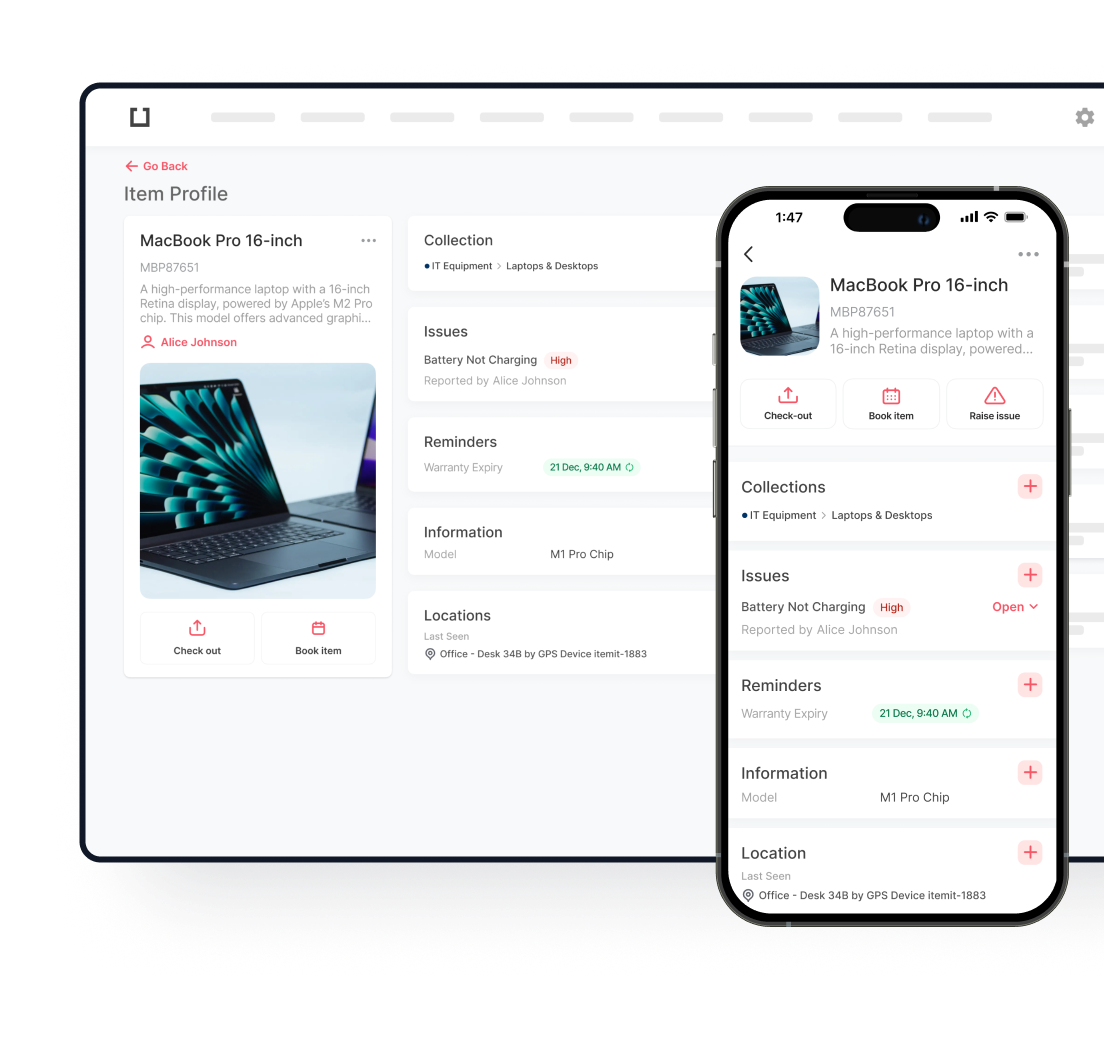
Efficient asset and equipment tracking is key to maintaining productivity and safety in the fast-paced corporate world. The PUWER inspection is one effective but sometimes disregarded instrument for achieving this balance. Its purpose is to guarantee that machinery and equipment used in workplaces are safe, fit for purpose, and compliant with legal standards.
What makes PUWER inspections so important? Their influence transcends mere regulatory compliance; they are absolutely vital in simplifying inventory management and maximising how companies use their assets. These audits help companies remain proactive, lower downtime, and extend the lifetime of their machinery by spotting possible hazards and inefficiencies.
This paper explores how PUWER inspections improve asset management effectiveness, thus changing the way companies use their most valuable assets. From lowering running risks to enhancing workplace safety, these audits are more than just a checkbox; they are a pillar of sustainable corporate operations.

What is a PUWER Inspection?
Every piece of equipment in a workplace holds responsibility. Some are silent workhorses, grinding away day after day. Others are more temperamental, prone to quirks and glitches that could mean trouble if left unchecked. PUWER inspections step into this reality, ensuring that all machinery—not just the obvious culprits but every tool—meets strict safety and performance standards.
The Provision and Use of Work Equipment Regulations (PUWER) 1998 might not sound thrilling, but its purpose is anything but dry: it’s about protecting lives. Those inspections give you a way to keep people safe, operations smooth, and machines from becoming liabilities. It’s not some distant regulatory checklist. It’s grounded in the day-to-day realities of using equipment that, when neglected, could hurt someone or grind productivity to a halt.
Here’s where it gets interesting. A PUWER risk assessment is the detective work behind the inspection. It investigates the risks lurking beneath the surface. That guard missing from a circular saw? It’s flagged. The braking system on a forklift that’s started acting up? It doesn’t go unnoticed. Every potential hazard gets mapped out so that it can be fixed before it becomes a real problem.
You’re not just preventing disasters with these inspections; you’re setting the stage for efficiency. Equipment that’s safe and maintained is the equipment you can trust. And in business, trust in your tools is everything.
The Importance of PUWER Inspection Frequency
Workplace equipment evolves constantly. With every use, wear and tear creep in, safety features face strain, and performance can decline. Regular PUWER inspections bridge the gap between optimal performance and the risks of neglect. But what makes the frequency of these inspections so critical? It’s all about staying proactive rather than reactive.
Why Does PUWER Inspection Frequency Matter?
- Preventing Unexpected Downtime
Equipment failures don’t just inconvenience your team; they disrupt workflows, delay projects, and pile on costs. Routine inspections minimise these disruptions by spotting issues before they escalate. When inspections are conducted regularly, equipment gets the care it needs to perform without unexpected hiccups. - Aligning with Asset Audit Practices
If you conduct asset audits to track inventory and assess equipment value, pairing this with frequent PUWER inspections makes sense. Audits provide an overarching view of your assets, while inspections zoom in on safety and functionality. Together, they ensure you’re not just tracking assets but keeping them in optimal working condition. - Extending Equipment Lifespan
Maintenance is like insurance. A small investment in regular checks pays off with fewer repairs and replacements. Machines that are inspected consistently are less likely to wear out prematurely, saving costs in the long run.
Finding the Right Inspection Schedule
There’s no one-size-fits-all approach to PUWER inspection frequency. Factors like the intensity of equipment use, the environment it operates in, and the risks associated with its failure dictate the schedule. For high-risk equipment—think heavy machinery or tools used daily—frequent inspections are non-negotiable. For less critical items, the intervals might be longer, but they should never be overlooked.
The Asset Management Advantage
Consistent inspections enhance more than safety. They drive efficiency by ensuring that every piece of equipment is ready when you need it. This approach translates to better resource allocation, reduced operational delays, and a team that can focus on productivity instead of firefighting equipment problems.
When done right, PUWER inspections turn asset management into a proactive, streamlined process. The result? A workplace where safety and efficiency go hand in hand.

How to Conduct Effective PUWER Inspections
A PUWER inspection provides clarity about the condition of your equipment. It’s a process that uncovers risks, enhances safety, and ensures every tool or machine performs as it should. The key to making inspections work isn’t just following a checklist—it’s approaching each step with a focus on real-world outcomes, ensuring that every detail serves a purpose in improving safety and efficiency. Here’s how to get it right:
1. Understand the Equipment in Use
Start by identifying all equipment that falls under the scope of the Provision and Use of Work Equipment Regulations (PUWER). This includes machinery, tools, and vehicles used in the workplace. It’s essential to know what you’re working with so you can tailor the inspection to the unique risks and requirements of each asset.
2. Compile and Maintain a PUWER Register
A PUWER register is your ultimate tracking tool. It’s a centralised record of every piece of equipment requiring inspection, along with its condition, maintenance history, and inspection dates. Keeping this updated ensures no asset is overlooked, and it helps you stay organised when planning future inspections.
3. Perform a PUWER Risk Assessment
At the heart of every effective inspection is a thorough PUWER risk assessment. This step evaluates each piece of equipment for potential hazards, such as missing safety guards, faulty components, or improper usage. Pay special attention to high-risk equipment that could pose serious safety threats if something goes wrong. The goal here is to flag risks before they lead to accidents or costly downtime.
4. Engage the Right Personnel
An effective PUWER inspection requires trained individuals who understand both the technical aspects of the equipment and the regulatory standards. Involve maintenance teams, equipment operators, and safety officers to ensure a well-rounded inspection process. Their firsthand experience with the equipment is invaluable.
5. Inspect Beyond the Basics
Go beyond surface-level checks. Inspect safety features like emergency stops, brakes, and guards, but also assess functionality and ergonomics. Is the equipment still fit for purpose? Are operators using it safely? An effective inspection digs deep, covering all angles.
6. Document Everything
Record findings meticulously, including the condition of each asset and any risks identified. Use your PUWER register to log the inspection details, track follow-up actions, and ensure accountability for corrective measures. Clear documentation is your defence in case of audits or incidents.
7. Address Issues Immediately
Spotting a problem is only half the battle. Addressing it quickly is where businesses truly excel. Whether it’s replacing a worn-out part, installing missing safety guards, or revising usage procedures, swift action prevents minor issues from escalating.
8. Set a Regular Inspection Schedule
Effective inspections aren’t one-and-done. Establish a schedule based on the frequency of equipment use, risk levels, and environmental factors. High-risk or heavily-used equipment should be inspected more often, while lower-risk items may require less frequent checks.
By treating inspections as an integral part of equipment management, businesses create a system that evolves with their needs. Coupling these inspections with an updated PUWER register and meaningful risk assessments ensures that the process stays practical and effective. The result? Safer workplaces, better-managed assets, and fewer operational headaches.
Integrating PUWER Inspections with Asset Tracking Systems
Integrating PUWER Inspections with Asset Tracking Systems
These days, businesses use technology to make complicated tasks easier, and PUWER inspections are no different. Conventional approaches—manual record-keeping, dispersed spreadsheets, and paper-based logs—can’t meet the needs of handling equipment safety and compliance. Combining PUWER inspections with asset tracking systems helps companies control operational efficiency as well as compliance in a simpler, more intelligent approach.
Technology Meets Compliance
Software for asset tracking removes the guesswork that comes with running inspections. These systems let you easily monitor safety certifications, inspection schedules, and performance criteria by keeping a centralised, real-time database of all your equipment. Using tools like equipment checkout software helps you also monitor asset use, so providing a better picture of wear and tear over time. This visibility helps businesses prioritise inspections based on actual usage rather than arbitrary timelines.
Benefits of Asset Tracking in PUWER Compliance
- Improved Scheduling for Inspections
Asset tracking systems provide automated reminders for upcoming PUWER assessments, ensuring no piece of equipment is overlooked. These reminders are particularly valuable for businesses with large inventories, where missing a single inspection could have costly consequences. - Real-Time Data for Better Decisions
Integrated systems let you monitor equipment status in real time. If a machine flagged during a PUWER inspection is due for maintenance, the system records it immediately, helping you coordinate repairs without delay. - Streamlined Documentation
Forget digging through old files or spreadsheets. Asset tracking systems centralise all inspection records, maintenance logs, and risk assessments in one place. This makes compliance audits and reporting significantly easier. - Enhanced Accountability
These systems allow you to assign inspections to specific team members and track their completion. Knowing who conducted each inspection and when adds a layer of accountability that improves compliance reliability.
Making PUWER Inspections Smarter
By combining technology with the principles of PUWER inspections, businesses create a proactive system that keeps their equipment safe and their operations running smoothly. Tools like equipment checkout software not only track usage but also help align maintenance efforts with real-world needs. Meanwhile, automated workflows ensure inspections happen on time, and data stays accessible for audits or analysis.

Try itemit
Choose a better way to track
your assets.
Start your free 14-day trial now!
Frequently Asked Questions
What is the purpose of a PUWER inspection?
A PUWER inspection ensures that workplace equipment is safe, suitable for its intended use, and maintained in compliance with the Provision and Use of Work Equipment Regulations (PUWER). Its primary goal is to identify potential hazards, reduce risks, and ensure employees can operate machinery safely. These inspections protect workers, prevent accidents, and keep equipment functioning at its best.
What is a PUWER inspection?
A PUWER inspection is a detailed examination of work equipment to confirm it meets legal and safety standards. It involves assessing machinery, tools, and other workplace equipment for risks and ensuring all necessary safety measures, such as guards, brakes, and emergency stops, are in place. Inspections also evaluate whether the equipment is suitable for its purpose and used correctly.
How often are PUWER inspections carried out?
PUWER inspection frequency depends on equipment type, usage, and risks. High-risk machinery may require daily, weekly, or monthly inspections, while lower-risk equipment usually needs annual checks. Businesses should evaluate their needs and establish a safety-compliant inspection schedule that minimises interruptions.

Keep Learning
itemit Blog
Tips, guides, industry best practices, and news.
What Is Active RFID? A Complete Guide to Smart RFID Tags
Discover what Active RFID is, how active tags function, and the key benefits and use cases that make this technology essential for modern tracking systems.
Everything You Need to Know About 2D Barcodes
Discover everything about 2D barcodes, including how they work, their benefits, and how they are revolutionizing industries and improving business operations
Complete Guide to Asset Lifecycle Management and Its Benefits
Learn about asset lifecycle management and how it helps businesses optimize asset usage, reduce costs, and improve efficiency throughout the asset’s life.



